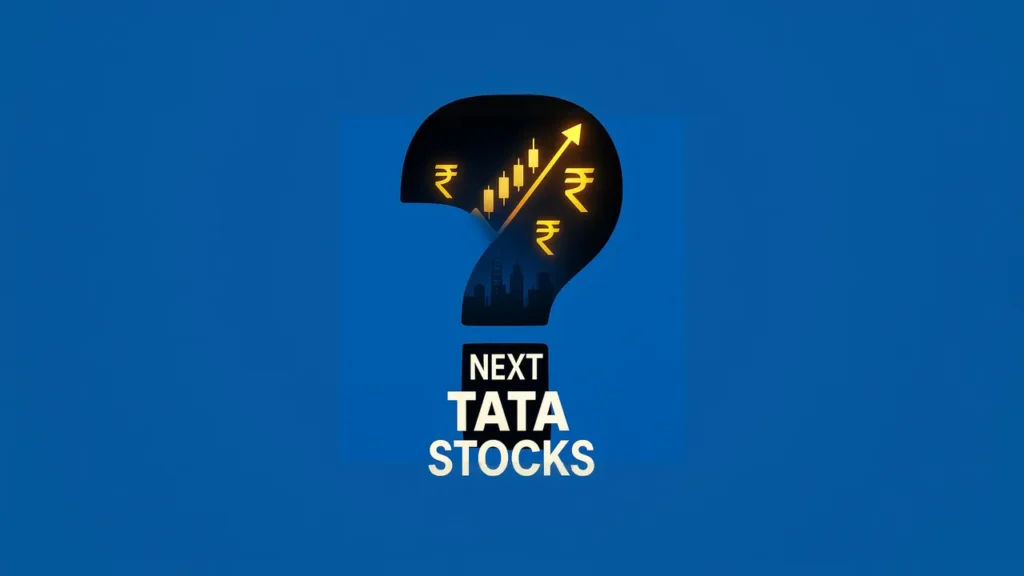Introduction
India’s economic landscape is brimming with innovators poised to become tomorrow’s giants. While Tata Group has long been a symbol of diversified dominance, a new wave of companies in EV, space tech, and AI are quietly building unassailable moats. Drawing inspiration from Ratan Tata’s visionary bets, we uncover 3 under-the-radar stocks that could mirror Tata’s success by 2030. Let’s explore these hidden gems!
1. Exide Industries – The EV Battery Revolution’s Silent Leader
Criteria: Innovation leadership, scalable moat, and strategic partnerships.
Exide, traditionally known for lead-acid batteries, is pivoting aggressively to lithium-ion tech, aiming to corner India’s EV battery market by 2030:
- EV Mega Factory: Building a ₹6,000 crore gigafactory in Bengaluru, targeting 12 GWh capacity by 2025.
- Partnership Power: Collaborating with global giants like China’s SVOLT for lithium-ion tech, reducing R&D risks.
- Existing Moats: 50% market share in automotive batteries, providing cash flow to fuel EV ambitions.
“The future of mobility is electric, and batteries are the heart of this transition.” – Nirmala Sitharaman, Finance Minister of India
Why It Could Dominate: With India’s EV battery demand set to grow 30% annually, Exide’s infrastructure and partnerships position it as a Tata-like conglomerate in the making.
2. MTAR Technologies – India’s Answer to SpaceX Suppliers
Criteria: High entry barriers, niche dominance, and government backing.
MTAR, a precision engineering firm, supplies critical components to ISRO, DRDO, and global space giants like SpaceX:
- Space & Nuclear Edge: 65% revenue from nuclear and space sectors, with margins above 25%.
- Rocketing Growth: As of September 30, 2024, MTAR Technologies had a robust order book valued at Rs. 942.25 crore, with new orders of Rs. 247.02 crore received during Q2 FY25.
- Defense Moats: Exclusive supplier of fuel cells for India’s light combat aircraft (Tejas).
“MTAR is India’s hidden space tech champion—think of it as the ‘Bharat Dynamics’ of the new space race.” – CNBC TV18
Why It Could Dominate: With India’s space economy projected to hit $13 billion by 2025, MTAR’s technical expertise and government ties create a Buffett-style “wide moat.”
3. Kellton Tech Solutions– The AI & Blockchain Dark Horse
Criteria: First-mover advantage, niche focus, and recurring revenue.
Kellton Tech, a mid-cap IT firm, is betting big on AI-driven solutions for supply chains, healthcare, and fintech:
- AI Growth Surge: 40% YoY revenue jump in AI/ML projects in 2023-24.
- Blockchain Moats: Partnered with Andhra Pradesh govt. for blockchain-based land registry systems.
- Global Clientele: Serves 200+ clients, including Fortune 500 firms like 3M and Reckitt Benckiser.
“The best investments are boring businesses with explosive potential.” – Warren Buffett.
Kellton’s low-profile, high-margin AIaaS (AI-as-a-Service) model fits the bill.
Why It Could Dominate: India’s AI market is set to grow at 25% CAGR to $14 billion by 2030, and Kellton’s focus on vertical-specific solutions mirrors Tata’s strategy with TCS.
Why These Stocks Could Be the “Next Tata”
- Sector Tailwinds: EV, space, and AI are India’s trillion-dollar opportunities by 2030.
- Moat Multipliers: Exide’s infrastructure, MTAR’s technical exclusivity, and Kellton’s IP in AI create lasting advantages.
- Visionary Leadership: Exide’s CEO Subir Chakraborty and MTAR’s Parvat Srinivas Reddy are industry pioneers, akin to Ratan Tata’s strategic mindset.
Conclusion
As Ratan Tata once said, “Take the stones people throw at you and use them to build a monument.” These three stocks embody that resilience, leveraging India’s tech boom to carve monopolies in sunrise sectors. While risks exist—regulatory shifts, execution delays—their long-term potential mirrors Tata’s early days in steel and software.
Disclaimer: This is not investment advice. Stocks are subject to market risks; consult a financial advisor.
Which underdog do YOU think could become India’s next conglomerate? Comment below!
FAQs:
1. Why are Exide Industries, MTAR Technologies, and Kellton Tech called “the next Tata”?
These companies operate in high-growth sectors (EV, space tech, and AI) with strong competitive advantages (economic moats). Like Tata’s early bets in steel and IT, they combine innovation, strategic partnerships, and scalable models to dominate niche markets by 2030.
2. What gives Exide Industries an edge in India’s EV boom?
Exide is transitioning from lead-acid batteries to lithium-ion tech, backed by a ₹6,000 crore gigafactory and partnerships with global players like SVOLT. With 50% market share in automotive batteries, it’s poised to lead India’s $30B EV battery market (BloombergNEF).
3. How does MTAR Technologies benefit from India’s space economy?
MTAR supplies precision components to ISRO, SpaceX, and defense projects. Its ₹1,200 crore order book, tied to missions like Gaganyaan, and 25%+ margins position it as a critical player in India’s $13B space economy (IN-SPACe).
4. Why is Kellton Tech a dark horse in AI?
Kellton focuses on AI-driven solutions for supply chains and blockchain projects for governments. With 40% YoY growth in AI/ML revenue and Fortune 500 clients, it mirrors TCS’s early days in niche tech dominance.
5. Are these stocks high-risk investments?
Yes, emerging sectors like EV, space, and AI carry risks like regulatory changes, execution delays, and competition. However, their strong moats (Exide’s infrastructure, MTAR’s exclusivity, Kellton’s IP) mitigate long-term risks.




